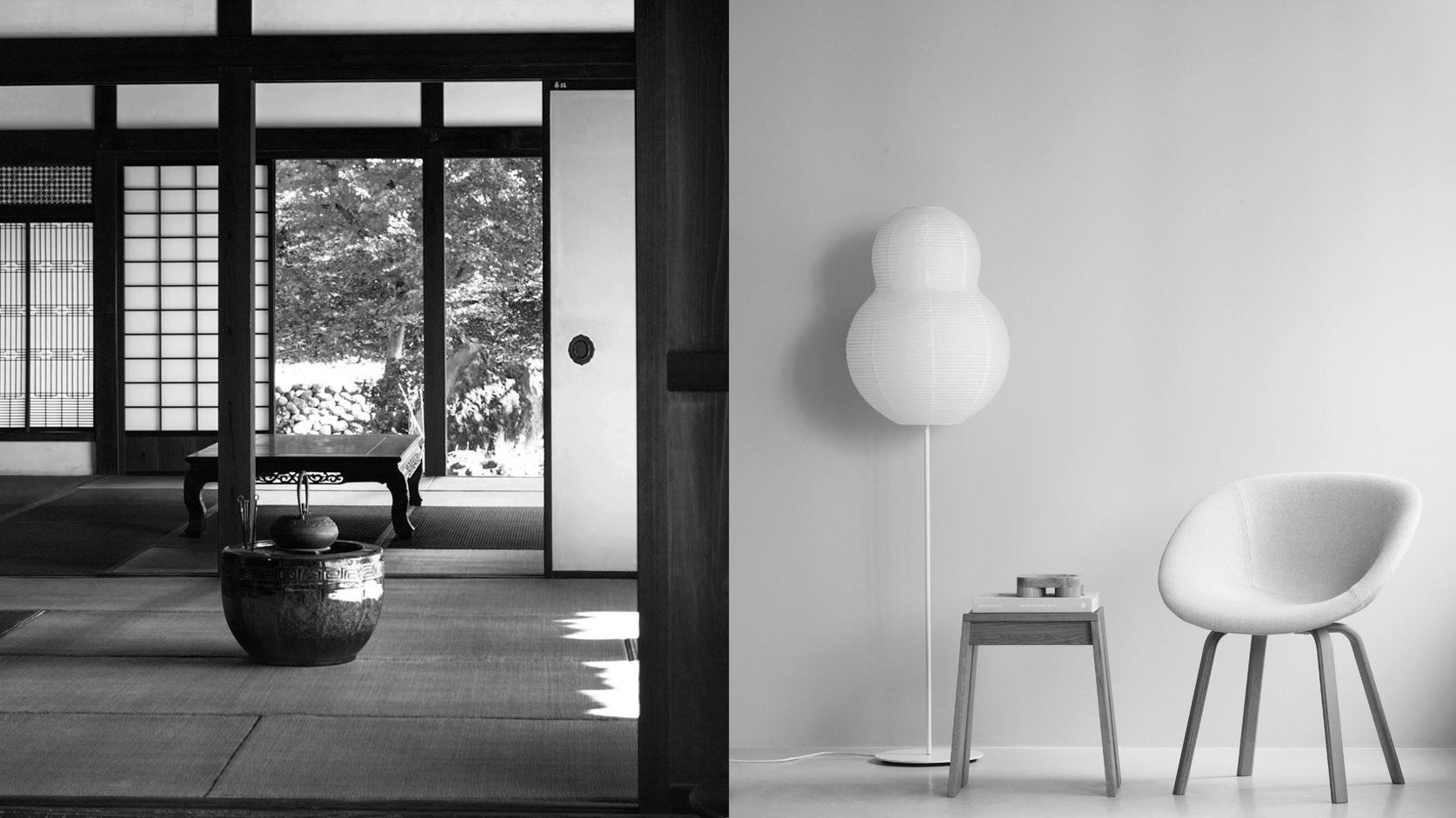Ikebana, one of the three classical Japanese arts of refinement, is much more than just arranging flowers. While it might seem like it’s about placing blooms in a vase, Ikebana is a mindful practice that captures the harmony between nature and human creativity.
The Meaning of Ikebana
Ikebana translates to "bringing flowers to life," and through this traditional Japanese art form, flowers, branches, leaves, and stems are given new life as tools for creative expression. The goal is not just to create a beautiful display, but to reveal the inner beauty of each natural element and express emotions through their arrangement.
Ikebana is deeply connected to Japanese philosophy, particularly the appreciation of nature’s transient beauty, reflecting ideas like Wabi Sabi (finding beauty in imperfection) and Ma (the significance of empty space). This mindful practice encourages artists to carefully consider the natural shapes and qualities of each element, arranging them in a way that feels balanced and harmonious.
In Japanese culture, Ikebana holds special significance. It is believed to promote mindfulness and spiritual awareness, requiring discipline and concentration. Practicing Ikebana can make a person more patient and open-minded, fostering a deeper connection to the natural world. It is considered a spiritual practice that allows individuals to find inner peace and tranquility through a deep connection with the natural world.
The 7 Essential Ikebana Principles
In this section, we will explore the seven key principles that serve as the foundation for every Ikebana arrangement. By understanding these principles, you’ll not only learn how to select and arrange each element effectively but also gain insight into the deeper connection between nature and artistic expression.
1. Line
Let’s begin with the first principle: Line. In Ikebana, line is one of the most fundamental elements. It refers to the flow and direction created by the stems, branches, and flowers in the arrangement. Lines guide the viewer’s eye and establish the overall structure and movement of the piece.
In traditional Ikebana styles, such as Shoka Shofutai, arrangements often follow a triangular structure defined by three main lines, each representing a different element of the universe.
- The tallest line, called Shin(真), symbolizes heaven. This line provides the main structure and sets the tone for the entire arrangement.
- The medium line, known as Soe(副), represents humanity. It adds depth and complements the height of Shin.
- The shortest line, referred to as Tai(体), symbolizes the earth. Positioned low and spreading outward, it grounds the arrangement.
Together, these three lines create a sense of balance and flow, reflecting the harmony between heaven, humanity, and earth.
In Ikebana, the principle of line is not merely a technical aspect; it embodies the deeper philosophy behind the art. It guides the viewer’s eye, evokes emotion, and represents the connection between nature and humanity. The careful use of lines transforms a simple arrangement of flowers and branches into a meaningful artistic expression.
2. Balance
Now, let’s move on to the second principle: Balance. In Ikebana, balance is not just about achieving symmetry or equal distribution among elements; it’s about fostering a harmonious relationship between different components in a way that feels natural and organic. This means that even if the arrangement is asymmetrical, it can still possess a sense of balance that resonates with the viewer.
For example, imagine a single tall branch leaning gracefully in one direction. To create a sense of stability and balance, you might place a flower on the opposite side. This placement naturally draws the viewer’s eye and helps to establish equilibrium within the arrangement.
Such designs reflect the imperfect yet balanced forms found in nature. In the natural world, we rarely encounter perfect symmetry; instead, we see a variety of shapes, sizes, and colors coexisting harmoniously.
In Ikebana, the principle of balance teaches us to appreciate the beauty of asymmetry and the importance of creating an arrangement that feels unified and cohesive. This approach allows for a deeper connection with the artwork, inviting viewers to engage with its natural flow and energy.
3. Harmony
While balance focuses on creating stability through the careful placement of each element, it’s equally important to consider how all these elements work together. This brings us to the principle of Harmony. Unlike balance, which deals with the distribution of visual weight, harmony emphasizes how all parts of the arrangement come together to form a pleasing composition. It’s not just about the individual beauty of each element; it’s about how they complement one another.
For example, the container plays a significant role in achieving harmony. Rather than being a separate component, its color and shape should enhance the relationship between the flowers and branches, creating a sense of unity throughout the composition.
This is what the principle harmony in Ikebana is all about—bringing different elements together to create a balanced and peaceful arrangement. The principle of harmony teaches us how to build connections between all the elements, ensuring the arrangement evokes a sense of peace and completeness.
4. Form
Harmony in Ikebana stems from respecting the natural qualities of each element used in an arrangement. This leads us to another essential principle: Form. In Ikebana, form encompasses not only the overall structure of the arrangement but also the unique shape and character of each material. This principle is about celebrating the inherent beauty of every branch, flower, and stem, allowing their distinctive forms to shine.
For instance, when arranging a gently curved branch, it’s important to position it in a way that accentuates its graceful arc. This placement draws attention to its natural flow, highlighting its beauty. Instead of forcing elements into unnatural shapes or rigid structures, Ikebana embraces their inherent forms, showcasing their organic qualities.
The principle of form encourages us to appreciate the unique curves, textures, and details of each element, respecting what makes them special. By honoring the original characteristics of the materials, we create arrangements that feel authentic and true to nature. This approach deepens our connection with the natural world, reminding us of the beauty that exists in its raw and unrefined state. In this way, the principle of form aligns closely with the philosophy of Wabi Sabi, which values simplicity, imperfection, and the transient nature of beauty. Both concepts celebrate the unique characteristics of each element, encouraging us to find beauty in what is often overlooked.
5. Color
Next, let's explore another vital aspect of Ikebana: color. In this art form, color does more than simply please the eye; it plays a crucial role in expressing feelings and moods. For example, soft pastel hues can create a calming and peaceful atmosphere, while vibrant colors can inject energy and excitement into an arrangement.
Moreover, specific colors carry symbolic meanings that influence the artist's choices and enhance the emotional impact of the arrangement. This thoughtful use of color allows Ikebana creations to tell a story and evoke specific feelings in the viewer, making each piece a unique expression of art.
To fully appreciate the role of color in Ikebana, it's essential to understand the traditional Japanese display space known as the tokonoma. The tokonoma is a recessed alcove commonly found in Japanese homes, especially in tea rooms. It serves as a dedicated area for showcasing decorative items, including paintings, calligraphy, and, most importantly, Ikebana arrangements.
In contrast to the muted colors and simple lines typically found in traditional Japanese interiors, the tokonoma stands out as a vibrant space for aesthetic expression. It serves as a showcase where colors are deliberately chosen to resonate with the season or special occasion.
In line with the Japanese appreciation for impermanence, displays in the tokonoma are regularly updated to reflect changing seasons and special celebrations. This dynamic nature of the tokonoma not only highlights the beauty of Ikebana but also reinforces its recognition as a true art form. Through color, each arrangement gains depth and meaning, enriching the viewer's experience.
6. Ma
Another essential principle in Ikebana is "Ma," a term we introduced in our previous article. Literally meaning gap, space, or pause, this concept emphasizes that emptiness and silence can be just as significant as the elements themselves. "Ma" teaches us to appreciate the spaces between materials in an arrangement, highlighting the importance of negative space.
In Ikebana, the "Ma" principle encourages artists to thoughtfully consider the relationship between elements and the empty spaces surrounding them. Rather than filling every inch with flowers or branches, practitioners intentionally leave gaps to allow each component to breathe and be appreciated individually. This principle reinforces the idea that sometimes, less truly is more. The deliberate creation of space enhances the overall impact of the arrangement, fostering a sense of harmony and balance.
7. Emptiness
The final principle we'll explore is Emptiness, a concept deeply rooted in Zen Buddhism. In many Eastern philosophies, emptiness is seen as a state of potential, fostering new growth and creativity. This principle invites viewers to reflect and engage with the arrangement, creating a dialogue between what is visible and what is not. It suggests that the absence of objects can be just as significant as their presence.
In this context, emptiness is more than just an empty space; it represents the potential and possibilities that come from what is missing. While the "Ma" principle emphasizes the importance of gaps and negative space between elements, the Emptiness principle focuses on the overall feeling and energy that these spaces convey. Together, these principles highlight the beauty of simplicity and underscore the significance of what may not be immediately apparent.
Related Articles:
• Wabi Sabi Meaning: Embracing Imperfection in Japanese Aesthetics
• Ikebana: The Art of Japanese Flower Arrangements
• Japanese Tea Ceremony: The Philosophy of "One Encounter, One Chance"
• Ma: The Japanese Aesthetic of Negative Space and Time
About Us
Dans Le Gris is a brand that began with everyday jewelry, with each handmade piece designed and crafted in Taiwan. We deeply value every detail, dedicating ourselves to creating timeless pieces through collaboration with experienced craftsmen.
In our journal, we provide irregular updates featuring articles about art, culture, and design. Our curated content encompasses diverse aspects of life, with the aspiration to offer meaningful insights and inspiration.







コメント
the seven essential principles video was absolutely amazing. thank you.